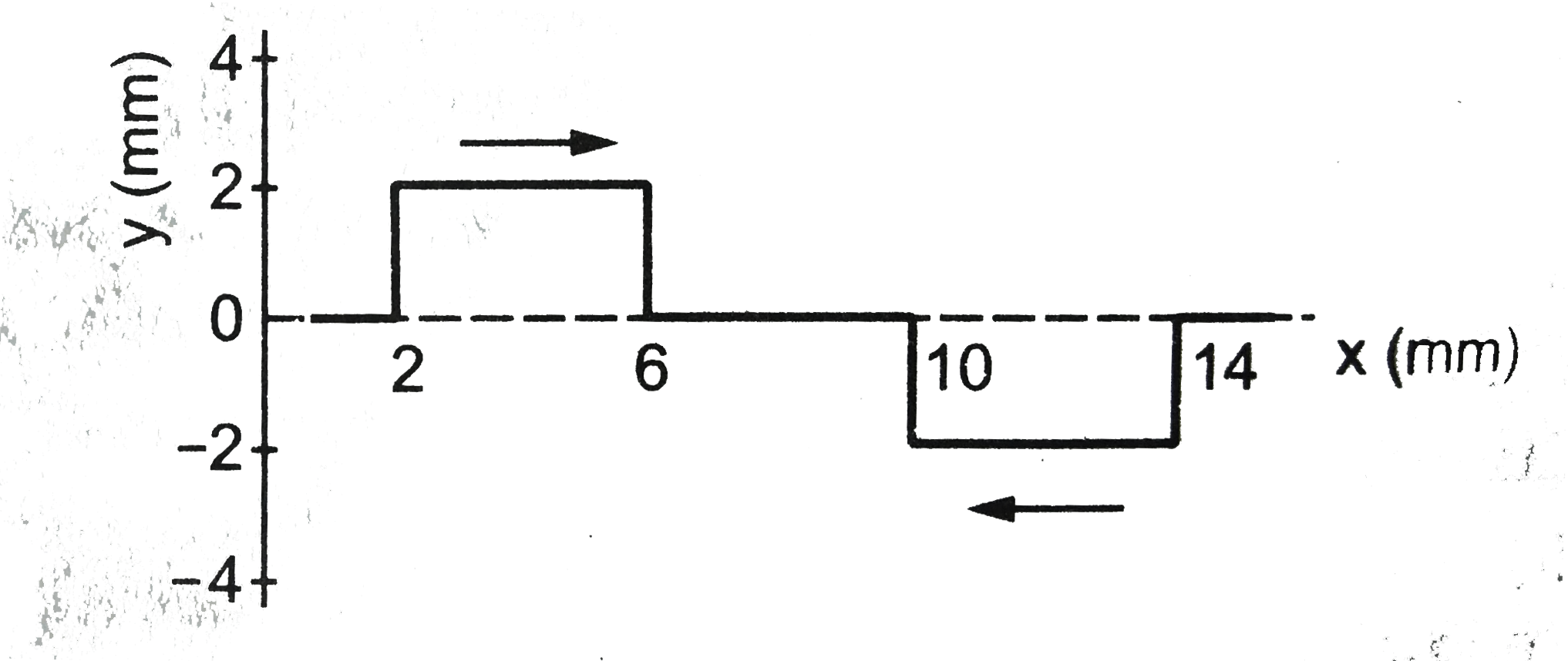The figure shows the snapshot at time t=0 of a transverse pulse travelling on a string in positive x direction.
(a) Sketch the pulse at a slightly later time.
(b) With the help of the given sketch draw a graph of velocity of each string segment versus position. Take upward direction as positive.

The correct Answer is:(##IJAPHYV01C13E01056_A01##),
Step by step video, text & image solution for The figure shows the snapshot at time t = 0 of a transverse pulse travelling on a string in positive x direction. (a) Sketch the pulse at a slightly later time. (b) With the help of the given sketch draw a graph of velocity of each string segment versus position. Take upward direction as positive. by Physics experts to help you in doubts & scoring excellent marks in Class 11 exams.
Updated on:21/07/2023Topper's Solved these Questions
Similar Questions
Following figure shows two wave pulses at t = 0 travelling on a string in opposite directions with the same wave speed 50 cm s1. Sketch the shape of the string at t = 4 ms, 6 ms, 8 ms, and 12 ms.

View SolutionFigure shows two wave opulses at t=0 travelling on a string i opposite directions with the same wave speed 50cms−1. Sketch the shape of the string at t=4ms, 6ms, 8ms and 12 ms.
 .
.
View Solution
Knowledge Check
At t=0,a transverse wave pulse travelling in the positive x direction with a speed of 2m/s in a wire is described by the function y=6/x2 given that x≠0. Transverse velocity of a particle at x=2 m and t= 2 s is
A3m/sB−3m/sC8m/sD−8m/sA ball thrown vertically upward with initial velocity u. Which of the following graphs represent the velocity of ball correctly as function of time?
(Take upward direction as positive)ABCDA wave is propagating in positive x−direction. A time t=0 its snapshot is taken as shown. If the wave equation is y=Asin(ωt−Kx+ϕ), then ϕ is
_2019_CBT7_E01_013_Q01.png) Aϕ=0Bϕ≡πCϕ=π/2Dϕ=3π/2
Aϕ=0Bϕ≡πCϕ=π/2Dϕ=3π/2
A wave pulse is travelling on a string at 2m/s along positive x-directrion. Displacement y of the particle at x = 0 at any time t is given by
y=2t2+1 Find
Shape of the pulse at t = 0 and t = 1s.
View SolutionA wave propagates on a string in the positive x-direction at a velocity u. The shape of the string at t=t0 is given by g(x,t0)=Asin(xa) . Write the wave equation for a general time t.
View SolutionThe velocity of a particle moving in the positive direction of the X-axis varies as V=K√S where K is a positive constant. Draw V−t graph.
View SolutionA wave pulse is travelling on a string at 2 m/s. displacement y of the particle at x = 0 at any time t is given by
y=2t2+1
Find
(ii) Shape of the pulse at t = 0 and t = 1s.
View SolutionA particle starts its motion from the origin in positive x-direction. The given graph shows the variation of acceleration (a) with velocity (v). Plot the corresponding graph between velocity and time.

View Solution




